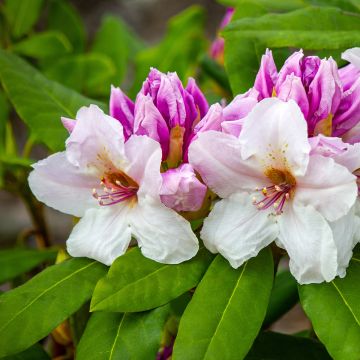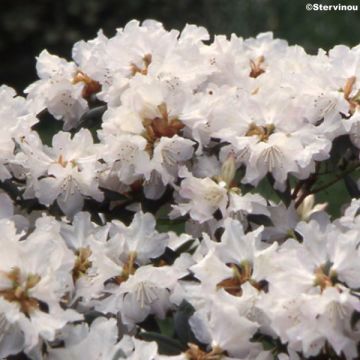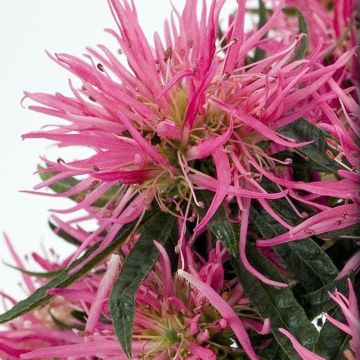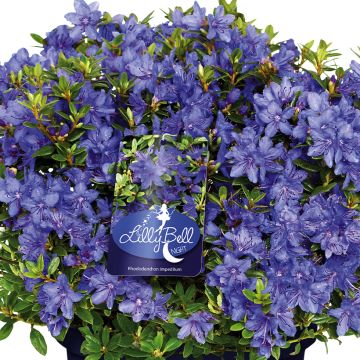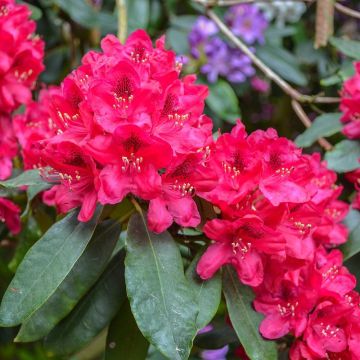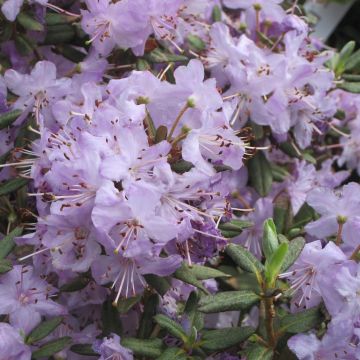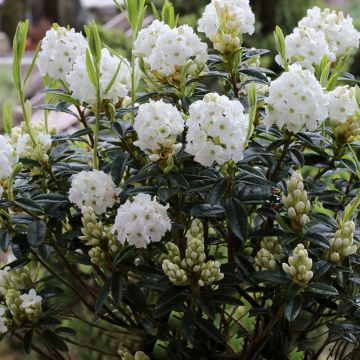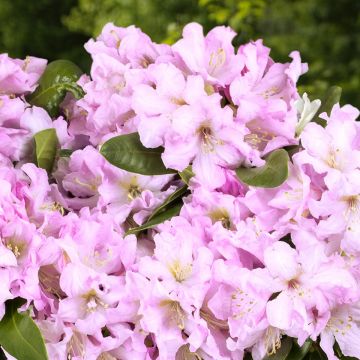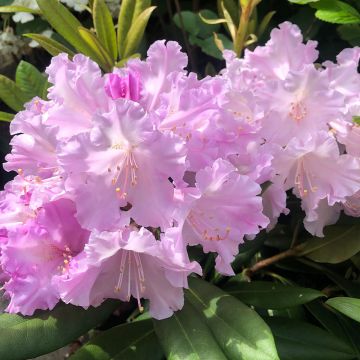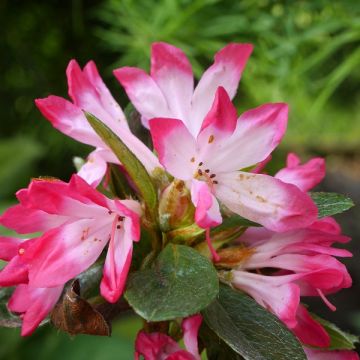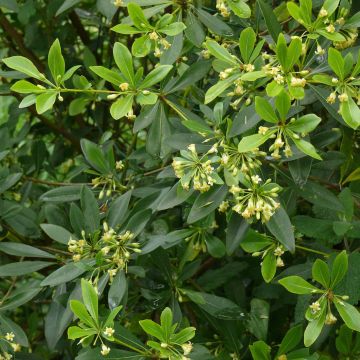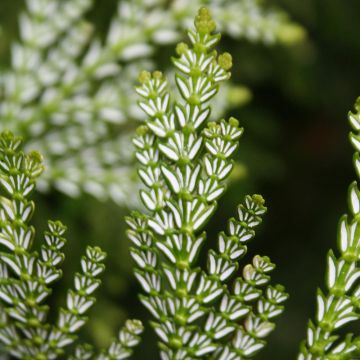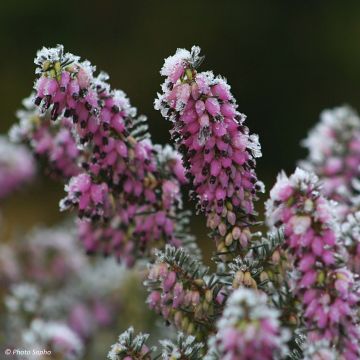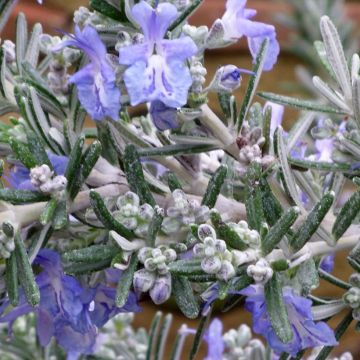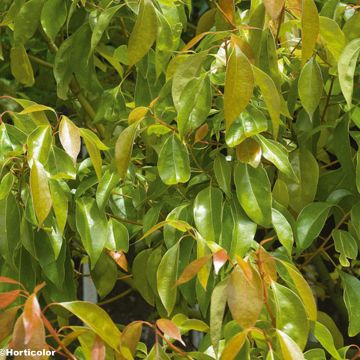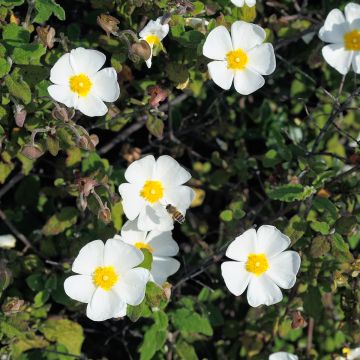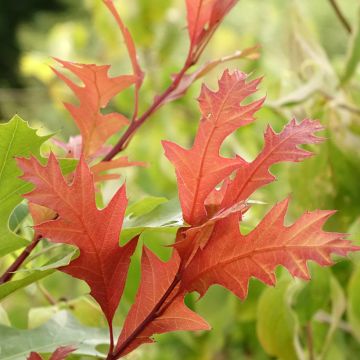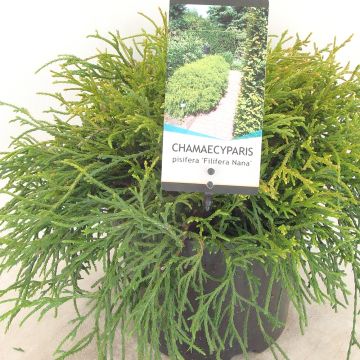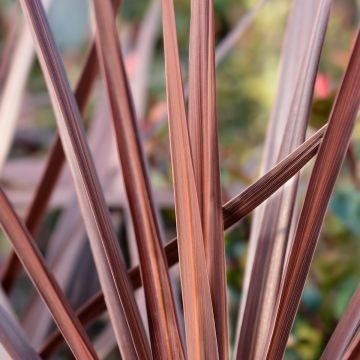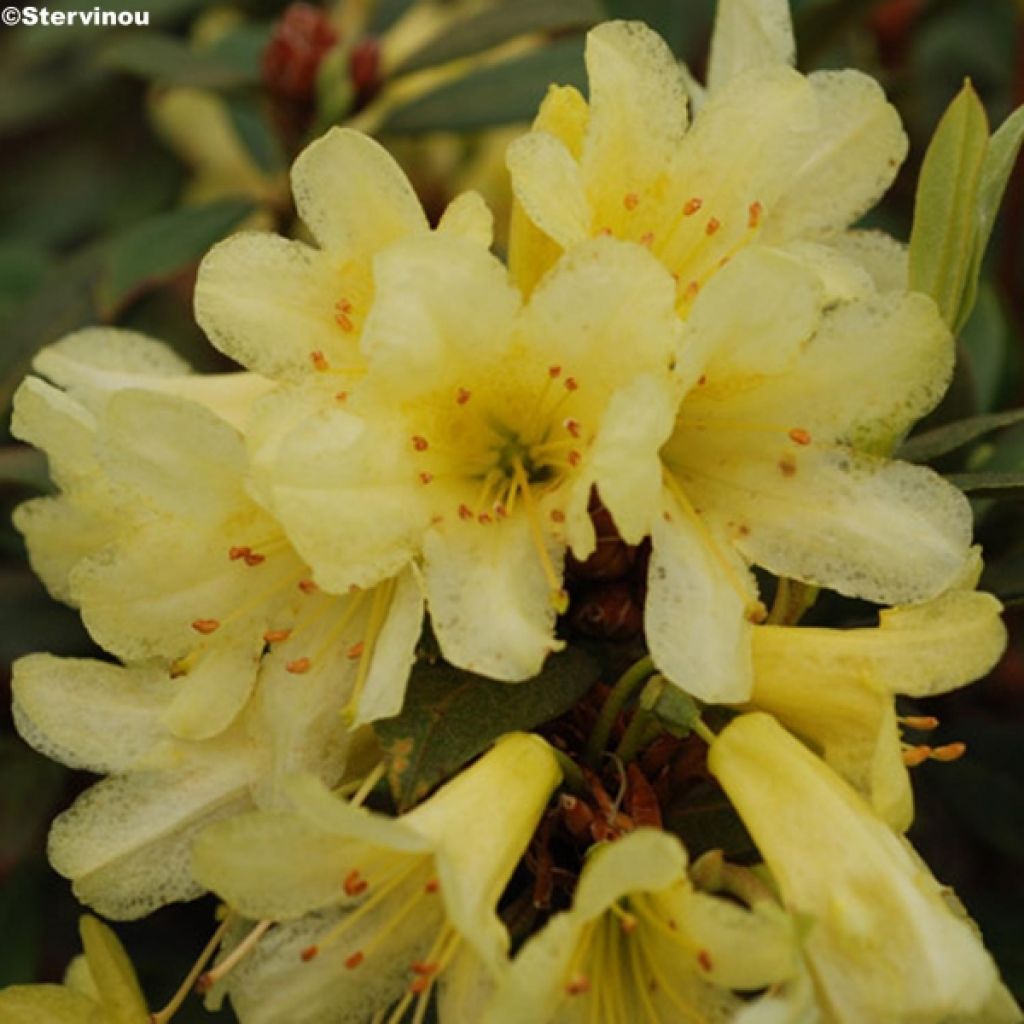

Rhododendron Saffron Queen
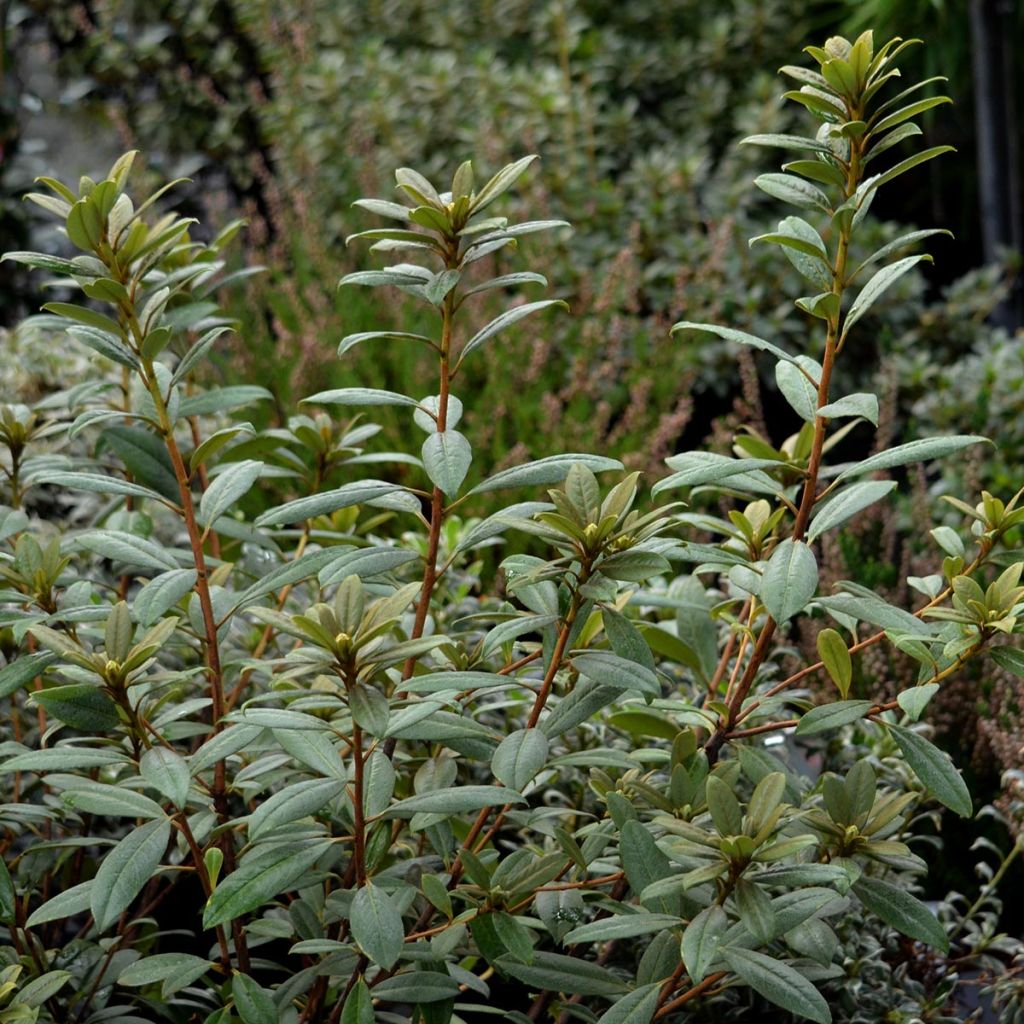

Rhododendron Saffron Queen
Rhododendron Saffron Queen
Rhododendron Saffron Queen
Rhododendron
This item cannot be shipped to the selected country
Delivery charge from €5.90
More information
Schedule delivery date,
and select date in basket
This plant carries a 24 months recovery warranty
More information
We guarantee the quality of our plants for a full growing cycle, and will replace at our expense any plant that fails to recover under normal climatic and planting conditions.
From €5.90 for pickup delivery and €6.90 for home delivery
Express home delivery from €8.90.
Does this plant fit my garden?
Set up your Plantfit profile →
Description
Rhododendron 'Saffron Queen', which naturally forms a small bush with a slightly spreading habit, displays beautiful sulfur yellow flowering in spring, touched with darker spots on the reverse side of the petals, truly radiant in partially shaded areas of the garden or terrace. Clothed in dark green evergreen foliage, the bush is decorative all year round. This slightly cold-sensitive variety is grown in the ground in oceanic climates. Elsewhere, plant it in a large pot that will spend the entire summer on the terrace or balcony. Like most Rhododendrons, this plant requires acidic, moist but well-drained soil rich in humus.
Rhododendrons are plants in the heath family, just like heathers, and prefer soils devoid of limestone, with an acidic tendency, and humid climates. The 'Saffron Queen' variety is an English horticultural hybrid dating back to 1948. It was obtained through the cross-breeding of the botanical species Rhododendron xanthostephanum, of Chinese and Burmese origin, and R. burmanicum, native to Burma. All three are fairly cold-sensitive plants, with beautiful mahogany-coloured barks, which bear yellow flowers in spring and evergreen leaves in winter. It should be noted that to this day, all descendants of the Rhododendron burmanicum created through hybridization are susceptible to severe frosts.
'Saffron Queen' slowly forms a rounded bush, 90cm (35in) tall and wide at the age of 10. Under good growing conditions, a mature plant reaches 1.20m (4ft) in all directions. Its leathery, elongated, lanceolate leaves, measuring up to 8.5cm (3in) long, are dark green and glossy on the upper side. They have a pronounced central vein. During the months of April and May, it will bloom in loose corymbs or clusters of 8 to 9 funnel-shaped flowers. Each flower, 6.3cm (3in) in diameter, is composed of light yellow petals, with darker dorsal lobes. The throat of the flower, which houses long stamens with brown anthers, has a deeper yellow hue. The flowering is not fragrant.
The Rhododendron 'Saffron Queen' is a beautiful plant for a garden with a mild oceanic climate. It will look stunning in the middle of a bed, in a shaded rockery, or as a standalone specimen. It will enhance the garden all year round and enliven it in spring with its refined and radiant flowering. Place it, for example, on a slope or in a rockery, alongside Ferns, Pieris, Heathers, Kalmias, or even Azaleas and Japanese Maples that appreciate the same environments. It can be grown in a container, provided it is provided with an acidic and well-drained substrate, special fertilizer for ericaceous plants, and regular watering with non-limestone water. This cultivation method allows it to be protected from cold during winter.
Report an error about the product description
Rhododendron Saffron Queen in pictures
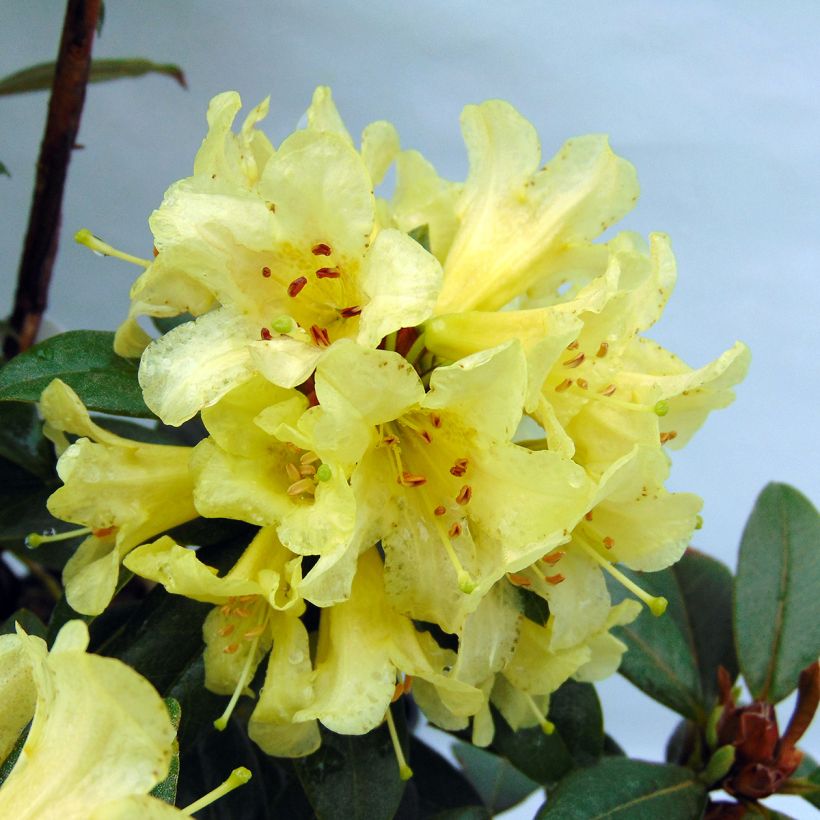

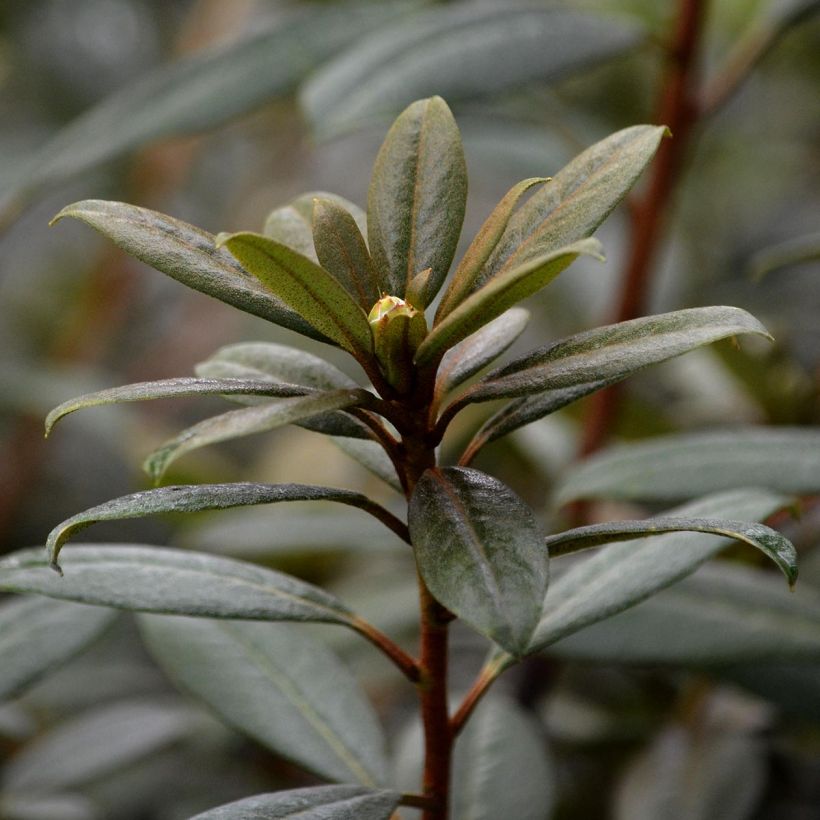

Plant habit
Flowering
Foliage
Botanical data
Rhododendron
Saffron Queen
Ericaceae
Rhododendron
Cultivar or hybrid
Other Small Rhododendron
Planting and care
Plant Rhododendron 'Saffron Queen' in a partially shaded or sunny location, protected from cold and drying winds, in a moist, humus-bearing and light soil, with a tendency towards acidity. Like all plants that prefer acidic soil, it cannot tolerate chalky or heavy soils that become waterlogged in winter. Its cold resistance is limited, and it will perish below -10°C (14°F) (some sources mention -7°C (19.4°F)). Dig a hole with a volume three times larger than the pot. Soak the root ball in non-alkaline water and plant the bush at the neck level, in a mixture composed of leaf compost, gravel or pumice, and loam. Water generously and keep the soil moist in summer. Azaleas and Rhododendrons have a shallow root system. As a result, they are sensitive to long periods of drought. Therefore, it is advisable to enrich the soil with humus and water abundantly during dry periods. Additionally, their root system is not very strong, which is why it is essential to lighten heavy soils with draining materials (gravel, pumice, clay pebbles) at planting. Apply a mulch of shredded pine bark around the base of the bush every spring to maintain soil moisture and acidity. Maintenance consists of removing faded flowers in summer and pruning dead branches. Azaleas and Rhododendrons can sometimes be attacked by weevils, which eat the edges of leaves and rootlets, as well as by the famous "rhododendron beetle," which rarely causes significant damage. Yellowing of the leaves (chlorosis) in Rhododendrons indicates poor iron assimilation from the soil and can lead to premature death of the plant. While limestone is often the cause, poorly drained soil or a deeply planted root ball can also explain the phenomenon.
Planting period
Intended location
Care
-
, onOrder confirmed
Reply from on Promesse de fleurs
Evergreen shrubs
Haven't found what you were looking for?
Hardiness is the lowest winter temperature a plant can endure without suffering serious damage or even dying. However, hardiness is affected by location (a sheltered area, such as a patio), protection (winter cover) and soil type (hardiness is improved by well-drained soil).

Photo Sharing Terms & Conditions
In order to encourage gardeners to interact and share their experiences, Promesse de fleurs offers various media enabling content to be uploaded onto its Site - in particular via the ‘Photo sharing’ module.
The User agrees to refrain from:
- Posting any content that is illegal, prejudicial, insulting, racist, inciteful to hatred, revisionist, contrary to public decency, that infringes on privacy or on the privacy rights of third parties, in particular the publicity rights of persons and goods, intellectual property rights, or the right to privacy.
- Submitting content on behalf of a third party;
- Impersonate the identity of a third party and/or publish any personal information about a third party;
In general, the User undertakes to refrain from any unethical behaviour.
All Content (in particular text, comments, files, images, photos, videos, creative works, etc.), which may be subject to property or intellectual property rights, image or other private rights, shall remain the property of the User, subject to the limited rights granted by the terms of the licence granted by Promesse de fleurs as stated below. Users are at liberty to publish or not to publish such Content on the Site, notably via the ‘Photo Sharing’ facility, and accept that this Content shall be made public and freely accessible, notably on the Internet.
Users further acknowledge, undertake to have ,and guarantee that they hold all necessary rights and permissions to publish such material on the Site, in particular with regard to the legislation in force pertaining to any privacy, property, intellectual property, image, or contractual rights, or rights of any other nature. By publishing such Content on the Site, Users acknowledge accepting full liability as publishers of the Content within the meaning of the law, and grant Promesse de fleurs, free of charge, an inclusive, worldwide licence for the said Content for the entire duration of its publication, including all reproduction, representation, up/downloading, displaying, performing, transmission, and storage rights.
Users also grant permission for their name to be linked to the Content and accept that this link may not always be made available.
By engaging in posting material, Users consent to their Content becoming automatically accessible on the Internet, in particular on other sites and/or blogs and/or web pages of the Promesse de fleurs site, including in particular social pages and the Promesse de fleurs catalogue.
Users may secure the removal of entrusted content free of charge by issuing a simple request via our contact form.
The flowering period indicated on our website applies to countries and regions located in USDA zone 8 (France, the United Kingdom, Ireland, the Netherlands, etc.)
It will vary according to where you live:
- In zones 9 to 10 (Italy, Spain, Greece, etc.), flowering will occur about 2 to 4 weeks earlier.
- In zones 6 to 7 (Germany, Poland, Slovenia, and lower mountainous regions), flowering will be delayed by 2 to 3 weeks.
- In zone 5 (Central Europe, Scandinavia), blooming will be delayed by 3 to 5 weeks.
In temperate climates, pruning of spring-flowering shrubs (forsythia, spireas, etc.) should be done just after flowering.
Pruning of summer-flowering shrubs (Indian Lilac, Perovskia, etc.) can be done in winter or spring.
In cold regions as well as with frost-sensitive plants, avoid pruning too early when severe frosts may still occur.
The planting period indicated on our website applies to countries and regions located in USDA zone 8 (France, United Kingdom, Ireland, Netherlands).
It will vary according to where you live:
- In Mediterranean zones (Marseille, Madrid, Milan, etc.), autumn and winter are the best planting periods.
- In continental zones (Strasbourg, Munich, Vienna, etc.), delay planting by 2 to 3 weeks in spring and bring it forward by 2 to 4 weeks in autumn.
- In mountainous regions (the Alps, Pyrenees, Carpathians, etc.), it is best to plant in late spring (May-June) or late summer (August-September).
The harvesting period indicated on our website applies to countries and regions in USDA zone 8 (France, England, Ireland, the Netherlands).
In colder areas (Scandinavia, Poland, Austria...) fruit and vegetable harvests are likely to be delayed by 3-4 weeks.
In warmer areas (Italy, Spain, Greece, etc.), harvesting will probably take place earlier, depending on weather conditions.
The sowing periods indicated on our website apply to countries and regions within USDA Zone 8 (France, UK, Ireland, Netherlands).
In colder areas (Scandinavia, Poland, Austria...), delay any outdoor sowing by 3-4 weeks, or sow under glass.
In warmer climes (Italy, Spain, Greece, etc.), bring outdoor sowing forward by a few weeks.

































